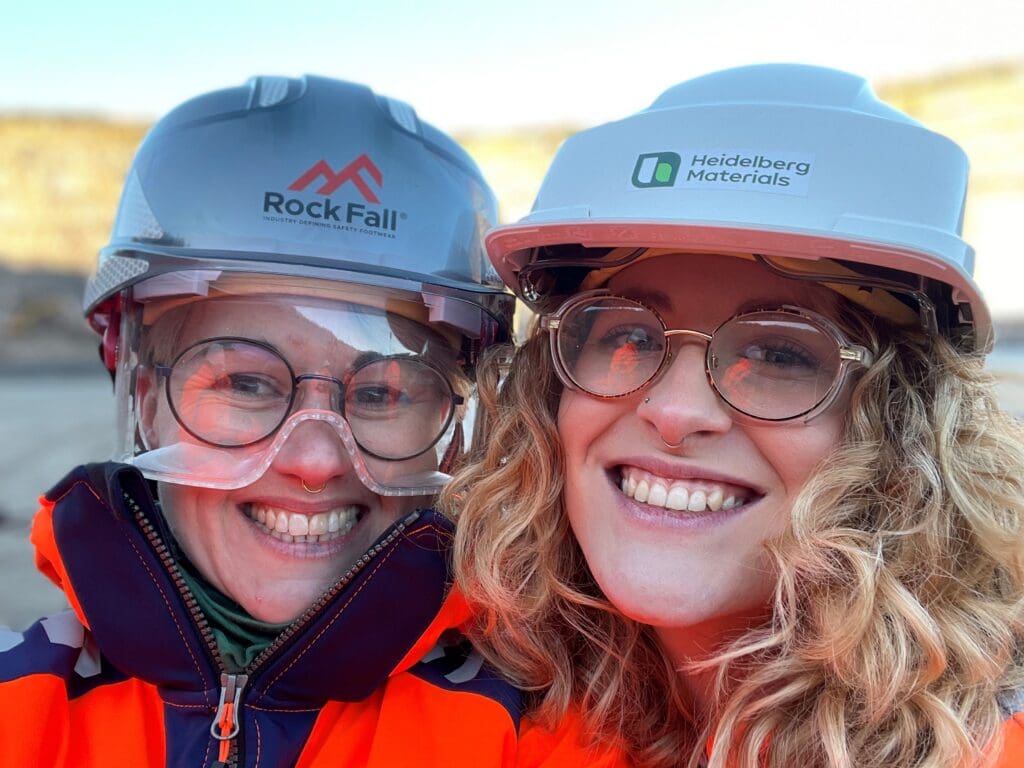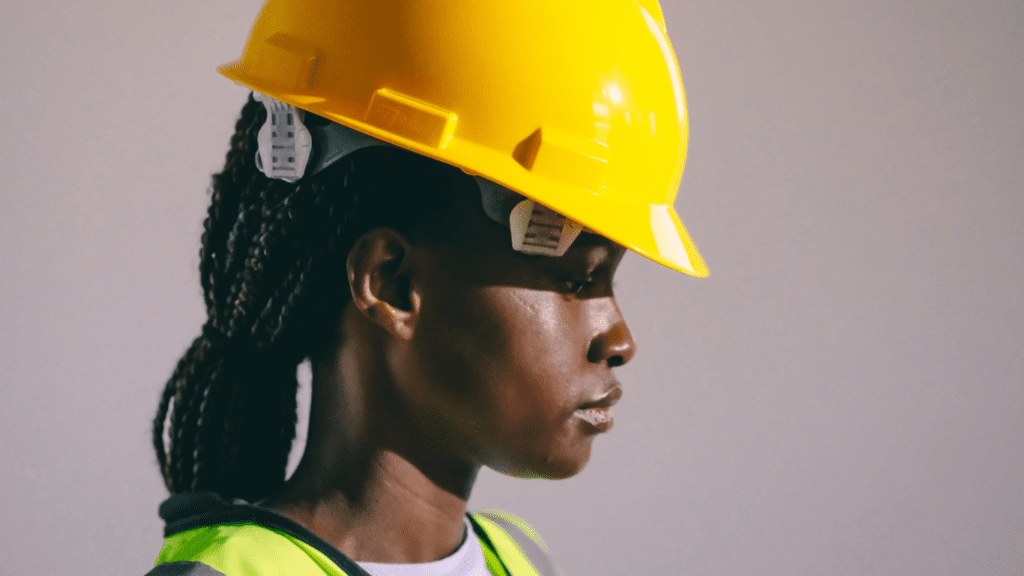PPE needs to be designed with a focus on diversity
How much of an impact does Personal Protective Equipment (PPE) have on your day at work? This article focuses on diversity in PPE for underrepresented groups in engineering and discusses upper body clothing and head protection. It is a follow up to an earlier article which looked at lower body clothing and footwear:
Why PPE needs to be designed with Diversity in Mind.
Katherine Evans is a Mining Geologist and the founder of Bold as Brass, a LinkedIn group for women to support each other. She has worked in various locations in the UK, Canada, North Sea and North Atlantic.


The impact of PPE on your day at work
Introduction
Following on from my recent article on women’s experience of PPE from the toes to the waistband, I wanted to complete the picture. So, this article focuses on women’s experience of PPE from the waistband to the head.
Hard hats – a key part of PPE
Hard hats don’t fit everyone. People with large heads struggle. People with small heads struggle. As well, people with afro hairstyles, cochlear implants, wigs, and religious headwear struggle. None of us should, there are so many options available. However, when we treat PPE as a commodity where cash is queen and it’s our employers who supply us with PPE that’s when we find ourselves in for a bumpy ride; or at least our hard hat is when it flops off or pops off and hits the ground again and again.


Ear defenders
The weight of clip-on ear defenders doesn’t make it any easier. On site, I would balance one at the front and one at the back of my hard hat to stop it toppling backwards. So, I had constant neck ache and tense shoulders from the weight. A lighter option, that isn’t for everyone I add, is safety ear buds. However, do you know women have smaller ear canals than men? If you, as a company, are supplying safety ear buds make sure to get both sizes.
Long hair
Where does a ponytail go in a hard hat? Hair needs to be tied back in most circumstances, but how?
The tightening ratchet on a swivel allows hair to come through, but fixed ratchet, or sash style, with a tiny gap isn’t much use. The only option then is tying your hair beneath it. This option for a geotechnical engineer always looking up at the state of the open pit faces doesn’t work. So, you’re left with bunches or plaits/braids. These are great for kids, but not so great for professionals already struggling to prove they know what they’re doing when their hard hat is constantly falling off and hitting the ground.
Face shape
Not all women have smaller faces than men, but neither do all people have the same shaped face. For example, Asian faces and Caucasian faces are different across the nose bridge and cheek bones. So, wearing the wrong shaped frame or frame width, can result in popping off or debris entering the eyes from the gap that has been created by the not to size fit.
After COVID-19 I think we’re all aware of the RPE (respiratory protective equipment) issues faced by people with smaller faces.
Gloves – as part of PPE
Have you ever tried to rewire a plug while wearing gloves? Well imagine trying to do that in a pair of gloves that are two to three sizes too big. It’s impossible, so you just take them off. This is exactly what happens on site. Oversized gloves are taken off to do the task and put back on when someone is watching or to walk around the site. So, the gloves aren’t doing the job they are meant to do.
The solution is to stock gloves for PPE on site in a range of sizes. It’s not just gloves which are too big, because trying to do a task in a pair of gloves which are too small is also a non-starter.
Jackets – as part of PPE
So on to jackets as part of PPE. Men’s frames are kind of like an upside-down A, whereas women’s are more like a rough 8 shape (these are pretty loose terms). So, for women, the elbows are in line with the waist and hips are wider than men’s because of the pelvis.
That means, when you put a woman into a men’s jacket, she may not get adequate space to close the zip over her breasts. The obvious answer would seem to be size up. However, sizing up in a men’s jacket, because of the shape of the male frame, results in increasing the width of the chest, but also shoulders, body length and arm length. So, the woman now has hands covered, especially if the fixture to tighten the wrists is a single button, or Velcro fastening that isn’t long enough for a wrist circumference that was never designed to sit in it anyway.
Conclusion to PPE needs to be designed with a focus on diversity
Day to day, women in heavy industry are asked to wear safety equipment that isn’t made for their body shape. This results in them being put at additional risk.
I hear the sound of the discrimination bell ringing. As a woman, you will know this feeling so well.
For example, we exit the site building in the following PPE.
A precariously balanced hard hat and equally precariously balanced safety glasses.
A coat to our knees that sticks out at the shoulders like a tent.
Hands making fists inside gloves to keep them from falling off inside sleeves that we can’t tie back.
Men’s trousers that have a crotch halfway to the knees, impeding our natural stride and ability to climb steps or inclines.
Whilst balancing in boots we can’t tie tight enough around our female ankles, heels blistered from the movement, and feet aching from clenching toes trying our hardest to hold on.
I’ve asked myself for the last fifteen years how is this type of PPE safety compliant, and how is the discrimination bell not being heard by everyone around me?


Further reading about diversity, HSE and PPE
Meet a UK HSEQ Health, Safety, Environment, and Quality Leader
Advice For Women Engineers Working in Gender Imbalanced Teams


Responses